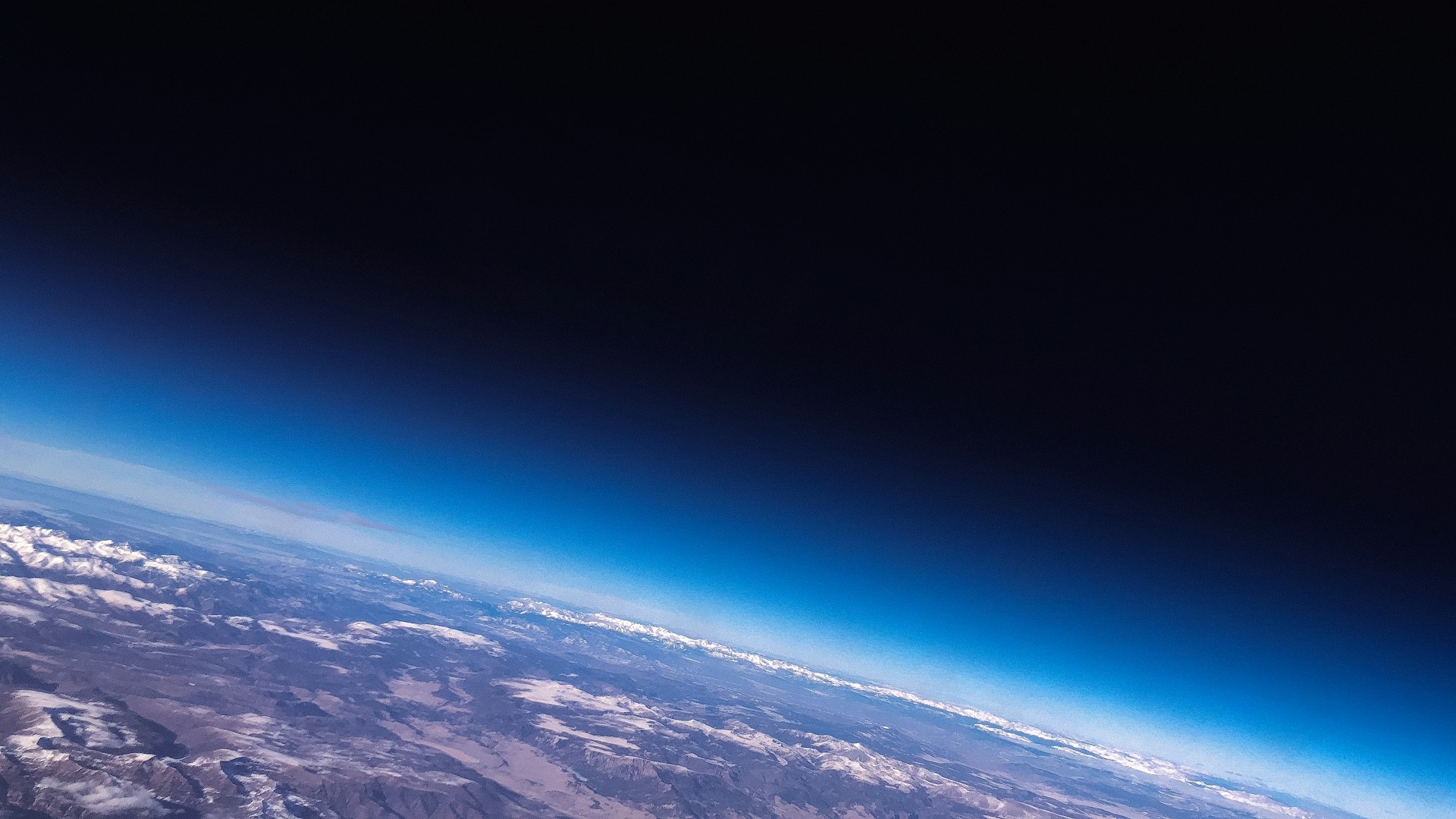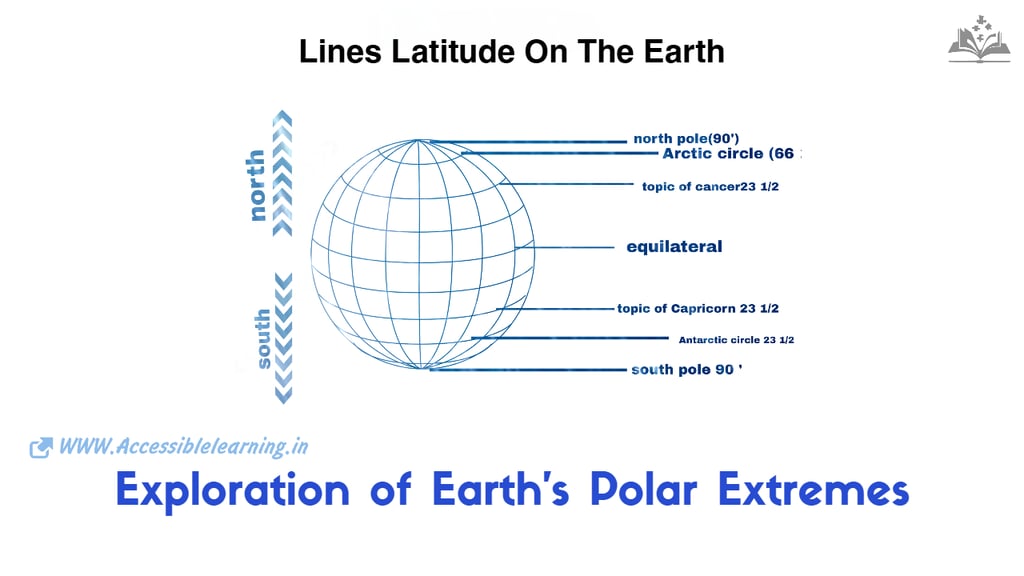
Earth's Polar Extremes: A Comprehensive Guide to the North and South Poles
This in-depth exploration delves into the remarkable contrasts and hidden wonders of Earth's polar regions. From their distinct geographical features to their crucial roles in global climate systems, this comprehensive guide illuminates the fascinating differences and surprising similarities between the Arctic and Antarctic. Readers will discover how these remote regions shape our planet's future while harboring some of nature's most extraordinary adaptations and scientific mysteries.
ENVIRONMENTGLOBAL ISSUESAWARE/VIGILANTA LEARNING
Kim Shin
2/26/20256 min read


The North and South Poles represent more than just the furthest points on Earth's axis of rotation—they are complex systems that play crucial roles in our planet's climate, ocean circulation, and biodiversity. These polar opposites showcase nature's incredible diversity while highlighting the delicate balance of Earth's ecosystems.
Geographical Characteristics: Beyond the Basics
North Pole's Unique Geography
The Arctic's geography is defined by the presence of the Arctic Ocean, which spans approximately 14 million square kilometers. This ocean, mostly covered by sea ice, creates a dynamic environment where the exact position of the geographical North Pole shifts subtly throughout the year. The seafloor beneath features fascinating structures, including the Lomonosov Ridge, a massive underwater mountain chain stretching across the Arctic Ocean.
South Pole's Continental Foundation
Antarctica, home to the geographical South Pole, is a continent of superlatives. Its ice sheet, averaging 2.16 kilometers in thickness, holds about 90% of the world's ice and 70% of Earth's fresh water. Beneath this ice lies a complex landscape of mountains, valleys, and lakes, including the mysterious Lake Vostok, a massive subglacial lake that might harbor unique life forms.


Climate Dynamics: A Deeper Look
Arctic Climate Systems
The Arctic's climate is influenced by complex interactions between ocean currents, atmospheric patterns, and the albedo effect of sea ice. The region experiences a phenomenon known as polar amplification, where feedback loops cause it to warm faster than the global average. The presence of the Arctic Ocean creates a maritime climate that, while extreme, is more moderate than Antarctica's.
Antarctic Climate Complexity
The South Pole's climate is shaped by several unique factors. The Antarctic Circumpolar Current, the world's largest ocean current, effectively isolates the continent from warmer waters. The combination of high elevation, extreme isolation, and the polar night creates the world's coldest and driest environment. Katabatic winds, which can reach speeds over 300 kilometers per hour, further define this harsh climate.
Biodiversity and Adaptation
Arctic Ecosystem Intricacies
The Arctic's biodiversity extends beyond visible wildlife. The region hosts specialized microorganisms adapted to extreme cold, including psychrophiles that can thrive in sub-zero temperatures. The seasonal changes in daylight drive remarkable adaptations, such as the Arctic fox's changing coat color and the ability of some fish species to produce natural antifreeze proteins.
Antarctic Life Forms
While the Antarctic continent might seem barren, it supports unique life forms. Extremophiles living in dry valleys demonstrate life's resilience, while the Southern Ocean hosts distinctive species like the Antarctic toothfish, which produces special proteins to prevent its blood from freezing. The region's isolation has led to high levels of endemism among its species.
Human Impact and Scientific Research
Modern Scientific Endeavors
Both poles serve as crucial sites for various scientific disciplines. In the Arctic, researchers study everything from auroral physics to indigenous knowledge systems. The South Pole hosts the IceCube Neutrino Observatory, using the pure ice as a medium to detect cosmic particles. These regions also provide crucial data about past climate changes through ice core analysis.
Environmental Monitoring
Advanced satellite technology and ground-based observations at both poles provide vital data about global environmental changes. These measurements help track everything from ozone levels to ice sheet mass balance, contributing to our understanding of global climate systems.
Geopolitical Significance
Arctic Politics and Resources
The Arctic region involves complex territorial claims and international agreements. The Arctic Council, comprising eight nations with Arctic territories, manages various aspects of Arctic cooperation. The region's estimated vast mineral and hydrocarbon resources have sparked international interest and debate about resource exploitation versus environmental protection.
Antarctic Treaty System
The Antarctic Treaty System represents a unique international agreement that sets aside an entire continent for peaceful purposes and scientific research. This system has evolved to include environmental protection protocols and regulations for scientific activities, serving as a model for international cooperation.


Mysterious Underground Features
Beneath Antarctica's ice lies a fascinating discovery: the Gamburtsev Mountains, often called the "Ghost Mountains." These peaks, comparable in size to the European Alps, remain completely buried under ice and were only detected through radar technology. What makes them particularly intriguing is that their sharp peaks suggest they formed relatively recently, yet they're located in a geologically stable region where mountain formation shouldn't occur.
In the Arctic, scientists recently discovered massive methane craters in the seafloor, some large enough to swallow entire city blocks. These craters formed when ancient frozen methane deposits suddenly released, creating underwater explosions. This phenomenon, known as "methane burps," could become more common as ocean temperatures rise.
Unusual Natural Phenomena
One of the most peculiar features of the South Pole is the presence of "blood falls," a red waterfall that flows from Taylor Glacier. The striking crimson color comes from iron-rich hypersaline water that's been trapped under the glacier for approximately 2 million years. This water is home to ancient microbes that have evolved to survive without oxygen or sunlight.
At the North Pole, scientists have documented a phenomenon called "frost" flowers"—delicate ice structures that form when open water meets extremely cold air. These formations contain concentrations of marine chemicals up to five times higher than seawater and play a crucial role in transferring chemicals from the ocean to the atmosphere.
Unexpected Wildlife Discoveries
Recent studies have revealed that the Arctic hosts "zombie" fires"—fires that smolder beneath the surface through winter, surviving under the snow to reignite in spring. These fires create unique ecosystems where heat-loving bacteria thrive in the frozen landscape.
In Antarctica, researchers have found evidence of a complex food web living in subglacial lakes, including organisms that have been isolated from the surface world for millions of years. Some of these creatures might represent entirely new branches on the tree of life.
Historical Anomalies
During World War II, the Germans attempted to establish a secret weather station in the Arctic, codenamed "Operation Haudegen." The station's crew was forgotten during the German surrender and wasn't retrieved until months after the war ended, making them technically the last German unit to surrender.
In Antarctica, scientists discovered the remains of a rainforest dating back 90 million years, suggesting that the continent once experienced temperatures warm enough to support palm trees and had a climate similar to modern-day New Zealand.
Modern Scientific Revelations
The South Pole hosts a unique telescope called IceCube that uses the entire ice sheet as a detector for neutrinos—nearly massless particles that rarely interact with normal matter. The crystal-clear ice allows scientists to track these elusive particles and study some of the most energetic events in the universe.
In the Arctic, researchers have discovered "dark" snow—snow darkened by algae that can accelerate melting. These algae have evolved to produce their own sunscreen, allowing them to thrive in the intense reflected light of the snow surface.
Geological Oddities
Antarctica contains what scientists call "Don Juan Pond," the saltiest body of water on Earth. It's so salty that it remains liquid even at -50°C (-58°F). The pond's unique chemistry might provide insights into how life could exist on other planets, particularly Mars.
The Arctic seafloor contains vast deposits of methane hydrates—ice-like structures that trap methane molecules. These deposits hold more carbon than all the world's oil, coal, and natural gas combined, leading some scientists to call them "fire ice."
Atmospheric Peculiarities
At the South Pole, scientists have recorded what they call "diamond dust," tiny ice crystals that form in clear sky conditions and create stunning optical effects. These crystals can produce multiple suns in the sky, known as "sun dogs," and complete circular rainbows called "halos."
The Arctic experiences a phenomenon called "polar night thunderstorms"—rare" thunderstorms that occur during the dark winter months. These storms are particularly puzzling because thunderstorms typically require solar heating to form.


Future Challenges & Opportunities
Climate Change Impacts
Both poles face unprecedented changes due to global warming, but with different implications. Arctic sea ice decline affects global weather patterns and ocean circulation, while Antarctic ice sheet stability has direct implications for global sea level rise. Understanding these changes requires continued scientific monitoring and international cooperation.
Emerging Technologies
New technologies are revolutionizing polar research. Autonomous underwater vehicles explore beneath the ice while advanced satellite systems provide increasingly detailed observations. These technological advances improve our understanding of polar processes and help predict future changes.
Conservation and Sustainable Management
Protection Initiatives
Various international efforts aim to protect polar environments. Marine Protected Areas in both regions help preserve biodiversity, while specific regulations govern resource extraction and tourism. The challenge lies in balancing human activities with environmental protection.
Indigenous Knowledge and Rights
In the Arctic, indigenous peoples' traditional knowledge provides valuable insights into environmental changes and sustainable resource management. Their rights and involvement in decision-making processes are increasingly recognized as crucial for effective Arctic governance.
Educational & Cultural Significance
Scientific Education
Both poles serve as natural laboratories for teaching about Earth sciences, climate change, and environmental protection. Educational programs and citizen science initiatives help engage the public in polar research and conservation.
Cultural Heritage
The poles hold significant cultural value, from indigenous Arctic cultures to the heroic age of Antarctic exploration. These cultural aspects contribute to our understanding of human adaptation and resilience in extreme environments.
This comprehensive examination of Earth's poles reveals their crucial role in global systems and human understanding. As we face increasing environmental challenges, the knowledge gained from studying these regions becomes ever more valuable for addressing global issues and protecting these unique environments for future generations.
Subscribe To Our Newsletter
All © Copyright reserved by Accessible-Learning Hub
| Terms & Conditions
Knowledge is power. Learn with Us. 📚


